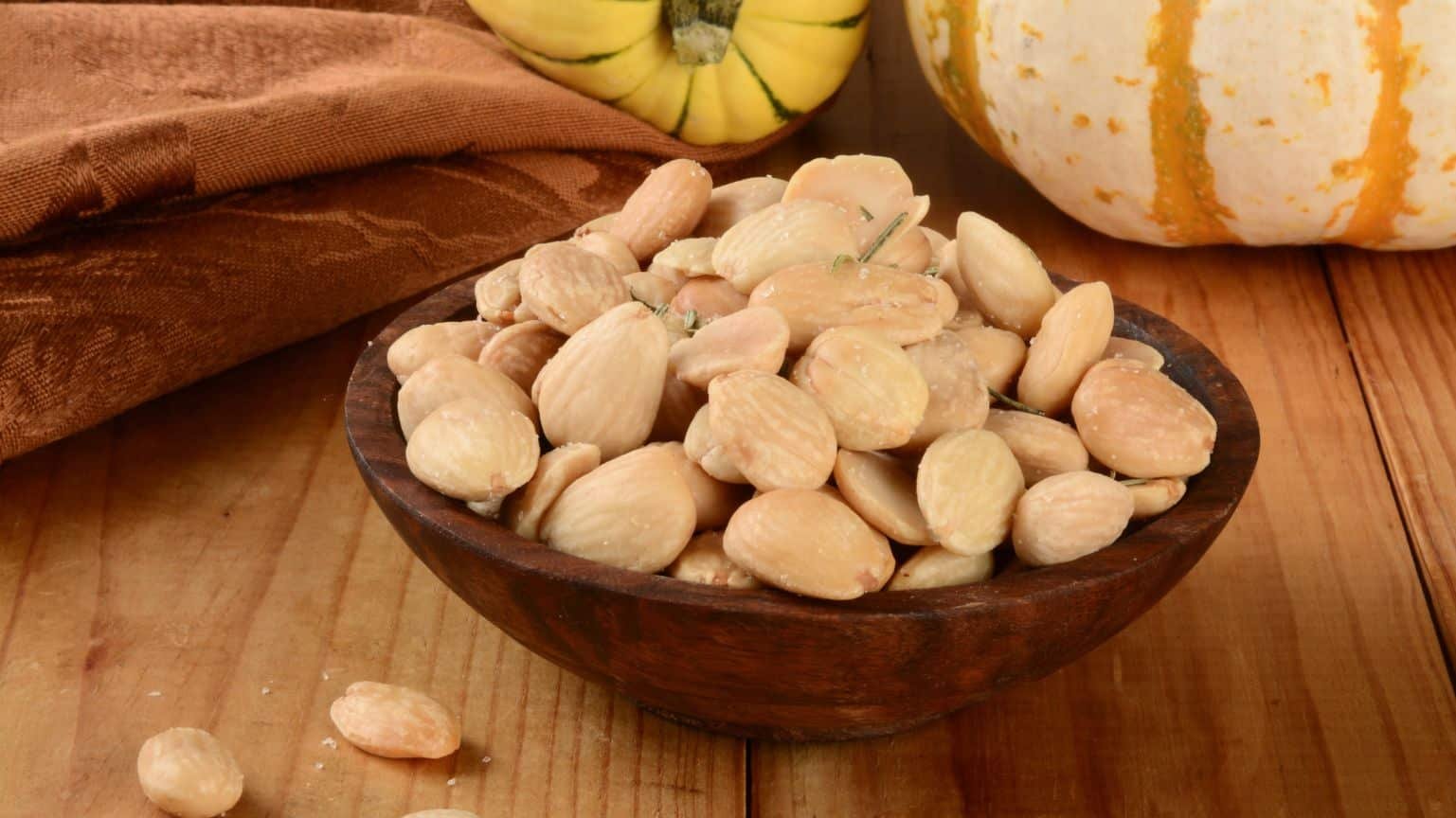
Almonds, the beloved tree nuts, have been cherished for their rich flavour and impressive nutritional profile for centuries. These versatile nuts have made their way into countless cuisines and recipes, and they come in various varieties that offer unique tastes, shapes, and culinary applications. In this comprehensive guide, we will embark on a journey to explore the world of almonds, discovering the diverse almond varieties that grace our tables and tantalize our taste buds.
1. Sweet Almonds (Prunus dulcis)
Sweet almonds, scientifically known as Prunus dulcis, are the most common and widely cultivated almond variety worldwide. They are prized for their delicate, mildly sweet flavour and are commonly used in a wide range of culinary applications.
Characteristics:
- Flavour: Sweet almonds have a subtly sweet taste with a creamy, buttery texture. They are often eaten as a standalone snack or used in baking and cooking.
- Colour: These almonds have a pale, beige-coloured shell and a light tan kernel.
- Usage: Sweet almonds are incredibly versatile and can be used in both savoury and sweet dishes. They are commonly blanched to remove the skin and ground into almond flour for gluten-free baking. They also make delicious almond butter and almond milk.
2. Bitter Almonds (Prunus dulcis var. amara)
Bitter almonds, a close relative of sweet almonds, are known for their intense, bitter taste. Unlike sweet almonds, they are not typically consumed as a snack due to their bitter flavour and the presence of a naturally occurring toxin.
Characteristics:
- Taste: As the name suggests, bitter almonds have a pronounced bitter taste due to the presence of amygdalin, a compound that can release cyanide when ingested.
- Color: They have a similar appearance to sweet almonds, with a pale shell and a light tan kernel.
- Usage: Bitter almonds are not typically eaten on their own due to their toxicity. However, they are used sparingly in some culinary applications, especially in the production of almond extract, marzipan, and almond-flavoured liqueurs. Special processing methods are employed to remove or neutralize the cyanide.
3. California Almonds (Prunus dulcis var. dulcis)
California almonds, often referred to simply as “almonds,” are one of the most widely recognized almond varieties globally. They are cultivated predominantly in the Central Valley of California, making the United States a leading producer of almonds.
Characteristics:
- Flavour: California almonds are sweet, with a slightly nutty flavour and a firm, crunchy texture.
- Colour: They have a light brown shell and a pale, cream-coloured kernel.
- Usage: California almonds are incredibly versatile and are used in various culinary applications. They are a popular snack, roasted and salted, and are frequently incorporated into both sweet and savoury dishes, from almond-crusted fish to almond-studded pastries.
4. Marcona Almonds (Prunus dulcis var. amygdalus)
Marcona almonds, often referred to as “Queen of Almonds,” are a premium almond variety hailing from Spain. These almonds are prized for their unique shape, flavour, and culinary versatility.
Characteristics:
- Taste: Marcona almonds have a distinctly sweet, buttery flavour with a hint of almond essence. They are considered one of the sweetest almond varieties.
- Shape: What sets Marcona almonds apart is their rounder, more squat shape compared to the typical oval almonds.
- Usage: Marcona almonds are highly regarded in gourmet cooking. They are often blanched, lightly fried in olive oil, and sprinkled with sea salt, creating a delectable snack or tapas dish. They are also used in desserts, such as almond cakes and pastries, due to their exceptional flavour.
5. Jordan Almonds (Prunus dulcis var. amygdalus)
Jordan almonds, also known as “sugar almonds” or “confetti almonds,” are a unique almond variety known for their colourful candy-coated shells. They are often associated with weddings, celebrations, and special occasions.
Characteristics:
- Taste: Jordan almonds have a sweet, candy-like taste due to their sugar-coated exterior. Underneath the colourful shell, you’ll find a traditional almond kernel.
- Colourful Coating: These almonds are most famous for their brightly coloured candy coating, which adds a festive and decorative element to various celebrations.
- Usage: Jordan almonds are a popular choice for party favours, wedding favours, and candy dishes at special events. They are symbolic of good luck, health, wealth, happiness, and longevity in many cultures.
6. Indian Almonds (Prunus amygdalus var. dulcis)
Indian almonds, also known as “badam” in India, are a variety of sweet almonds cultivated in the Indian subcontinent. They have been a staple in Indian cuisine and traditional medicine for centuries.
Characteristics:
- Taste: Indian almonds have the classic sweet and nutty flavour characteristic of sweet almonds.
- Colour: They typically have a light brown shell and a pale, cream-coloured kernel.
- Usage: Indian almonds are widely used in Indian cuisine, both in sweet and savoury dishes. They are ground into almond paste to create rich gravies and desserts like badam halwa. In Ayurvedic medicine, they are valued for their nutritional and medicinal properties.
7. Wild Almonds (Prunus dulcis var. ferox)
Wild almonds are a lesser-known almond variety found in certain regions of the Mediterranean and the Middle East. Unlike cultivated almonds, wild almonds have a slightly different appearance and taste.
Characteristics:
- Taste: Wild almonds have a more intense, robust almond flavour compared to the sweetness of cultivated almonds. They can be slightly bitter or tart.
- Colour: They often have a darker and harder shell than cultivated almonds, and the kernel inside may vary in colour.
- Usage: While not as commonly consumed as cultivated almonds, wild almonds are sometimes used in traditional recipes, especially in regions where they are naturally abundant. However, they are generally not as popular for direct consumption due to their stronger taste.
Conclusion
The world of almonds is a diverse and flavorful one, offering a wide range of almond varieties to suit various culinary preferences and occasions. Whether you prefer the sweetness of Marcona almonds, the traditional crunch of California almonds, or the festive charm of Jordan almonds, almonds have earned their place as a beloved nut in cuisines and cultures around the globe. As you explore these almond varieties, you’ll discover the unique characteristics and flavours that make each type a delightful addition to your culinary repertoire.






